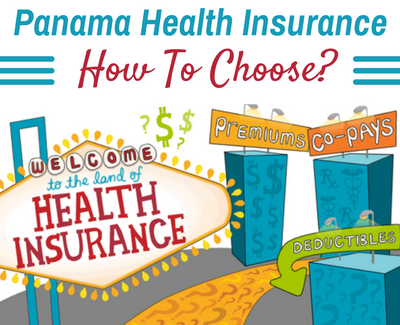
More and more expats in Panama are choosing international health insurance. One reason is that the local policies have become more limited. More importantly, international health insurance covers you even when you are traveling, offers a wider network of doctors and hospitals, and offers a higher coverage amount.
Typical Limits - International Insurance Policy
Here are some International companies to check out.
Save Money Don't Have USA Coverage
The policies are less expensive if you exclude coverage in the USA. You can include coverage in the USA, but it tends to double or almost double the policy cost.
When traveling to the US, whether you are US citizen or not, you can simply buy travel insurance for the specific time you will be in the States. This works well if you will be in the States for under 3 months. Also, I have heard that the International insurance company, Cigna, allows you to add up to 3 months of coverage in the States for a reasonable price.
For the questions you should ask before you buy insurance, click here.
Hospital-based policies and local HMO-style insurance policies offer coverage only in Panama. If you don't plan on travel much outside of Panama, or are have insurance back "home", it can be a good option. It is generally cheaper. However, most will not accept new applicants after the age of 65.
Typical Limits - Domestic Insurance Policy
If you do decide to go outside the HMO group you are reimbursed for only 60% of what would have been paid to the preferred provider.
If you are over 65, you will have to look into an International insurance company that accepts new applications 66 years old and older.
Here are some International companies to check out.
Don't know if you need health insurance? Ask yourself these 3 health and financial questions to find out.
A Broker's Recommendation.
Cari Collins is an insurance broker I often see recommended on various Facebook groups and forums. I reached out to her and asked for her advice for expats looking for health insurance in Panama. We had a very friendly exchange. And, importantly, she responded to her email and my questions very quickly.
Cari Collins' Advice To Expats
The name of the company I represent is Global Health Insurance. I think the name is a good description of what we provide. Not only is health insurance available but also travel medical, property, auto and life insurance.
For medical, I can represent WEA, Cigna, IMG and VUMI, among others. The policy I feel is the best value is WEA.
The things I like about it that you may not find with other insurance plans here in Panama, are:
So many expats visit the U.S. though. If they exclude the U.S. to save money, they still need coverage for those visits back. In those cases, travel medical coverage is a great solution. You can purchase a policy to cover only the days you are visiting. No medical background is needed because no pre-existing conditions are covered. But it will cover any accident or illness incurred during your visit.
The WEA policy that excludes the U.S. combined with an IMG travel medical policy for visits is a great way to make sure your health care costs are covered and because medical costs are so much less in Panama insurance costs are also significantly less.
Cari Collins' contact information: email: [email protected]. website: www.globalhealthinsurance.com/cari-collins.
Find out how to apply for health insurance in Panama
If you like this post, please like or share it. Thanks.
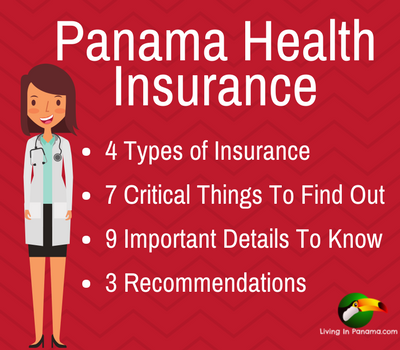
Panama has had health insurance for over a 100 years. More recently, more insurance companies are offering coverage in Panama.
1) International Insurance. International coverage is a good choice, especially if you travel frequently. The right international policy is also a good stop gap to cover the 2 year wait period before a local policy will cover any pre-existing condition. However, more and more expat are choosing International medical insurance over any of the local insurance plans.
2) Domestic Insurance. These are local HMO-style policies that only cover medical care in Panama. Coverage varies widely, but generally it is between US$300,000 and US$500,000. You are limited to a select group of doctors, hospitals and labs. Go outside the group, and you will only be reimbursed for 60%o of what would have been paid to the preferred provider. When selecting one of these policies be sure to review the list above of factors to consider when selecting insurance.
Panama health insurance companies will not issue insurance until you are living in Panama. You’ll need to prove that you are renting in Panama or have bought a house. And they will have have restrictions about how long you can back in your home country to stay insured. So, you cannot buy insurance in Panama at the much lower price then move back to the United States full time.
3) Domestic hospital discount plan. This is not true insurance. It is a discount plan at a specific hospital. These membership plans give participants hefty discounts on procedures performed at that facility only.
I know people who with the preventative discount plan at the Chiriqui hospital who are very happy with it. However, it is not an insurance policy. It can not be used in a hospital in Panama City for instance. The usefulness of some of these plans may have deteriorated in recent years due to changes in coverage.
4) Tricare insurance. This is only available to US retired military. It is actually not insurance, but a military benefit. From what I hear, Tricare coverage in Panama used to fabulous. However, due to various factors including abuse by consumers, it is more costly and limited. At this time, I am not sure what it covers or where it can be used. Those who qualify to use Tricare can find out more by going to visiting the tricare.mil website
You also may be able to use your current (non-Panama) insurance in Panama, but you will have to check your policy. Some cover some costs at out-of-your network rates. I believe this is particularly true if you have Blue Cross or Blue Shield and go to an affiliated hospital or clinic in Panama.
If you don't want the headache of comparing policies, you may want to use an insurance broker or agent. They can help you select the plan that best suits your needs and budget. I have heard positive things from other expats about these 3 insurance brokers. I have not used them myself.
I recommend you also read my observations and tips about health care in Panama.
Given the cost of an accident or major surgery, it is smart to get medical insurance coverage. This is particularly true if you are in your early 70s. It becomes very difficult to get insurance once you are 74 years old. Keep in mind, pre-existing conditions are not covered. So you may want to get insurance now, so those conditions are covered if and when they crop up.
Because health care is so affordable in Panama, some people, especially when they are younger, opt not to get medical insurance. If that describes you, you may want to read the 3 things to consider before you decide not to buy health insurance in Panama.

For instance, a typical doctor visit is $10. Total. Although, in a private clinic like Mae Lewis in David, it can be more, 20-$65 per visit depending upon the doctor. If you go to a public hospital, it is only a $1.50 to see a doctor and $10 a day if you are hospitalized.
However, if you need an operation or need cancer treatment or anything major you are going to wish you had insurance. The cost of all those items will be cheaper here in Panama than in the USA (and many other locations), but it will still cost you a pretty penny.
Before you decide not to get health insurance, review these 3 age, health, and financial factors. It will help you decide whether you should get a Panama health insurance policy now, later, or maybe never.
1) Your Age. It is possible to get international health insurance to cover you anywhere in the world at any age, if you’re willing to pay for it. Affordable options, however, become limited to non-existent after age 65, and extremely difficult after age 74. In fact, a desirable policy might not be available at all once you are 75, especially if you want to a local insurance policy.
I am referring in all these instances to the age you are when you initially apply for insurance. Once you have insurance, you can retain it regardless of your age. Although the cost of the insurance will rise as you go from one age bracket to the next.
2) Pre-Existing Health Conditions. No local health insurance in Panama covers pre-existing conditions. International health insurance companies are more likely to cover pre-existing conditions, but not necessarily every type. This is also an age-related consideration. The older you are the more likely you are to develop various medical conditions. If that is likely for you, you may want to consider getting insurance before a medical condition develops. That way any medical condition will be covered immediately as it starts to emerge.
Otherwise, you will have to get insurance and wait 2 years. After 2 years of coverage, most Panama insurance plans will cover all conditions, whether they were pre-existing or not. Which is why some people keep their "home" insurance or get International insurance for 2 years while also paying for Panama insurance. In this way, you are covered for any unexpected and costly outlays for major medical issues due to “pre-existing conditions” or any other gaps in coverage.
3) Access To Cash. Do you have the cash to cover any unexpected major health issue? You can pay the cost of procedures by credit card, but you usually must pay the doctor's fee in cash. You are almost always required to pay a private hospital, in full, before they will perform any major or costly procedure.
If you plan on using Panama's public health care system, you will save money. As I said a doctor's visit is $1.50. In fact, you can visit most doctor's in Puerto Armuelles for only 5 or $10. We have visited to the emergency room in Puerto for only 50 cents. But most expats opt to use the private system, for at least part of their care. The public system tends to have long waits and is limited in what they offer. I did just that went I went to the Mae Lewis clinic about my ankle.
Find out about Panama's 3 Health Care Systems here
Ultimately, whether you decide to get health insurance or not will depend upon your current and expected health & your risk tolerance. If you choose to be without health insurance, you won't be alone. A number of people chose that option in Panama. It is a fine option as long as nothing goes wrong.
You may want to invest in preventive care. We have written up some tips for a healthy lifestyle in the tropics, and ways to both eat well and save money in Panama.
But if you do have a big medical need, you may be forced to return to "home" to use medicare or other health insurance. Or perhaps you will be forced to move from one of Panama's private hospitals to a public hospital if you cannot afford the higher cost of private health care.
However, as you get older and the specter of major health issues starts to raise its head, you may want to rethink your health insurance decision. This is especially true as you enter your 60s and 70s. It becomes harder to get health insurance after you are 65 and extremely difficult to secure health coverage once you are 74 years old. Of course, if you will keep your health insurance back home, that can be a plan B, at least for conditions you can plan your travel around.
Find out more about your health insurance options here.

Using Scott's Cheap Flight tips on how to use Momondo and Google Flights really helped.
But he also has an entire guide of tips and information on finding the cheapest flights around the world.
Many of you are travelers, at a minimum to Panama, so I thought you might find these tips eye opening as well.
Next time you want to buy a ticket to Panama, or from Panama, you may want to test out his instructions.
Here they are (slightly modified).
General Tips & Tricks
Crossing the Ocean for Cheap. I (Scott) used to live in Washington DC, but the best ticket I ever purchased was from NYC to Milan for $130 roundtrip. It was well worth the $20 bus ride up, and I even got to spend the weekend with friends in NYC. If I had insisted on flying to Milan from DC, not NYC, the ticket would’ve been around $800, not the $150 I actually paid.
The next best fare I’ve gotten was from DC to Brussels for ~$250 roundtrip. So nice I bought it twice! Even though I didn’t have that much interest in Belgium, I knew once I was in Europe, budget flights to other European countries are incredibly common. For one trip I bought flights from Brussels to Norway (~$60 roundtrip) and for the other trip I bought flights from Brussels to Dublin (~$80 roundtrip). If I had insisted on flying from DC to Norway or Dublin (without stopping first in Brussels), I would have paid around $750 roundtrip, not the $310 and $330 I actually paid. And I wouldn’t have gotten a day in Brussels to boot!
Takeaway: If you want to get the cheapest flights possible, focus on getting the cheapest fares across the ocean, even if it’s not from your home airport or to your ultimate destination. Two itineraries are frequently cheaper than one. Plus you can stay and explore the city (in this case NYC or Brussels) as long or as short as you like.
Flexibility Is King
This is the way most people approach getting a flight.
Typically this results in high prices.
Use This Technique
Instead, if getting a cheap flight is your priority, flip that approach:
Plus, like I discussed above, once you get to Europe or Asia or wherever, it’s really easy to hop a budget flight to your final destination.
Be flexible with where and when to go. If you’ve picked out your destination, picked out your dates, and don’t have flexibility, 95% of what you can do to bring down the cost of airfare is already out the window. Flexibility is king.
Sidenote: Be sure to search more than one date. (Clicking the calendar in Google makes it easy and shows you cheap fares for two months at a time.) Often times shifting the dates by even a day can cut the price in half.
Southwest & Skiplagged.
Be sure to search Southwest.com separately since Southwest flights don’t show up on any flight search engines. For domestic flights, check out Skiplagged.com for some possible cheap hidden fares, but be sure to read up there on the basics of “hidden city ticketing” so you know what you’ll be doing.
When is the cheapest time to fly?
Most expensive time to fly?
It will also vary a bit by the specific destination, especially around popular festivals. Fares to Dublin for St. Patrick’s day or to China for Chinese New Year ain’t cheap.
When should I book my flight?
Advance Purchase. In terms of how far in advance, I typically recommend:
(If you’re booking for peak summer, I’d add a month or two onto these recommendations. If you’re traveling during low season it’s more likely cheap fares will pop up closer to departure date.)
Prices tend to jump in the last month or two before departure, so you don’t want to cut it too close. On the other hand, if you book too early and settle for a not-great fare, you’re missing out on potential future sales.
Of course, if you’re looking to travel around major holidays like Christmas or during peak summer, I’d add a month or two on those recommendations.
Day of the week. In general Tuesday, Wednesday, and Saturday are the cheapest days to travel. Friday and Sunday are usually the most expensive days.
Myth of Ideal Time To Book Ticket
It’s a recurring Internet myth that booking at a specific time each week (typically cited as Tuesday at 2pm or so) is when the cheapest flights are available. This was the case a couple decades ago when airlines loaded their fares once a week, but hasn’t been true for years.
How long will great fare last
Hard to say. Unless it’s an advertised sale (which usually aren’t that great to begin with), there’s no public end-date on any given fare.
The rule of thumb is that the better the fare, the shorter it will last. In general I wouldn’t expect most great fares to last longer than a few days.
Why aren’t there more deals from my airport?
The main reason is lack of competition from other airlines. Two of the cheapest cities for flights, New York City and Los Angeles, are also hubs for all three major American carriers (Delta, United, and American). On the contrary, many other large cities have just one dominant carrier, like Houston (United), Dallas (American), Atlanta (Delta), Phoenix (American), etc. Those cities have much fewer travel deals.
Tracking fares
Both Google Flights and Kayak let you track a specific trip and get alerted when the price drops.
General “really good fares” from US are:
Skipping A Leg
I found a cheap flight that departs from City A, connects through City B, and arrives in City C. If I live in City B, can I just skip the A-B leg?
No. Once you miss a leg of an itinerary, the rest of your itinerary automatically gets cancelled out.
The only way skipping a leg can work is (a) if you buy two separate one-way tickets rather than a roundtrip, or (b) if you just skip the very last leg of a roundtrip itinerary, in this case from City B to City C. This is a practice called “hidden city ticketing,” which the airlines don’t like (so don’t advertise your plans!) but has a seal of approval from the New York Times Ethicist.
Should I clear my cookies before searching?
No. It doesn’t make a shred of difference.
Where should I search for flights?
3 favorite tools to search for flights
There are also some more complex ones like the ITA Matrix, SkyScanner, and various plugins, but for most folks Google Flights, Priceline, and Momondo are plenty. (Remember that Southwest doesn’t show up on search engines, so check directly on their website.
In this post, I share Scott's tips on using Google Flights and Momondo.
Should I try to get a standby fare? Or book unsold seats at the last minute?
Basically, no.
Last minute deals can pop up, but it’s increasingly rare. In the last week or so before a flight, the price tends to skyrocket. This wasn’t true 20 years ago as airlines slashed prices to fill unsold seats, but nowadays airlines jack up prices on unsold seats knowing that business travelers are far more flexible on price but can’t make plans until the last minute.
How do I find cheap one-way tickets?
For most carriers, one-way flights are significantly more than half the cost of a roundtrip flight. If you want to fly into a different airport than you will depart from, usually better to book an open-jaw flight (flying A to B, then C to A) on one itinerary rather than two separate one-ways.
Airlines whose one-way flights are around half of a roundtrip include JetBlue, WOW, Norwegian, Condor, and basically all intra-continental budget carriers like Ryanair and Air Asia.
How do I find last-minute flights?
Pray.
In all seriousness, it’s pretty rare to find cheap last-minute flights because airlines typically jack up the price to gouge business travelers who are last-minute planners and not very price-sensitive. Cheap last-minute flights are more likely on international routes than domestic routes because business travelers don’t fly international routes nearly as much.
But other than using the tips above and generally searching Google Flights, Momondo, Skiplagged, and Southwest.com separately, there’s not a separate strategy for finding cheap last-minute flights.
Next time you want to buy a ticket to Panama, or from Panama, you may want to test out his instructions.
Actually, even if you aren't planning on traveling it is fun to see where you could go. If you live in Panama, you can even get deals sent to you for flights that originate in central america. Something that is otherwise very hard to get.
If you find this post useful, please like it. Thanks.
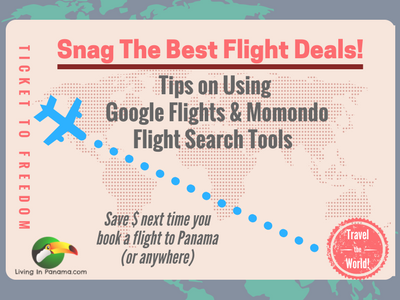
Of course, I assumed that the agent would have access to better information than I did. Most critically, I was counting on the agent being able to find me a cheaper, or at least a comparably priced, ticket than I could find myself.
Unfortunately, that was not the case. Most of the agents I contacted did not even get back to me. The few that did had found tickets significantly more expensive than I was finding. Which was very discouraging since the fares I was finding were rising in cost and had increasingly convoluted schedules.
Then my brother-in-law, Sam, told me about Scott's Cheap Flight deals. It was not really what I was looking for. He isn't a travel agent. He has a free and a paid service that notifies you of travel deals, mistake fares etc. (These deals are fun to get, even if you aren't able to take advantage of any of them! FYI - I am not affiliated in any way with Scott's Cheap Flights. But I am a huge fan.)
But his tips on how to use flight search tools were invaluable.
Of course, I have googled "how to find cheap flights" before. But I've had little or no luck using the advice I uncovered in those searches.
I had vastly better luck when using Scott's tips.
I had been looking for flights from Seattle to Panama. What I was finding was not encouraging. The prices weren't bad (or so I thought!) but the schedules were insane. I was finding flights with 8-24 hour layovers. Not acceptable.
Using Scott's tips (see below) I found a ticket for half the price of the flights I had been finding. And the flights also had much more sane flight schedules and connections.
The Catch: The flight left from Vancouver, Canada, not Seattle. But it only costs $30 to take the train from Seattle to Vancouver. And we love spending time in Vancouver. A win win. Thank you Scott!
Here is Scott's advice on how to use his favorite flight search tools.
Scott uses Google Flights and Momondo extensively.
Here is his tutorial on how to use those sites.
Pros & Cons Of The 2 Search Tools
First, a general explanation of what each site does well and does poorly.
Google Flights
Good at:
Bad at:
Momondo
Good at:
Bad at:
As you can see, Google Flights’ strengths mirror Momondo’s weaknesses and vice versa. This is why with most deals, using both sites in tandem is the best strategy.
Google Flights searches all but the smallest airlines, as well as the largest online travel agencies (OTAs) like Orbitz and Priceline.
When you get to the homepage, plug in where you want to fly from and where you want to fly to, along with your preferred dates, as so:

You can put in up to 5 airports in each box, separated by commas. City codes like NYC or WAS count for 3 of 5 because NYC = JFK, LGA, EWR and WAS = DCA, IAD, BWI.
In order to find the cheapest dates, click the first date box right below the FLYING FROM airport. When you do that, prices for 2 months will pop up, with the cheapest dates in green, like so:
Note: if you don’t see any green dates in the 2 months you’re looking at, try clicking the arrows to scroll through other months where you should find the cheapest prices.
Once you’ve looked at the calendar of lowest fares, click on the date you want for your departure, after which you’ll click on the date you’d like to return.
At this point, Google Flights then gives you a big list of possible flights, like so:
At this point you’ll click whichever of the flights looks best to you in order to select it as your outbound flight. I chose the $688 Air Canada flight.
After clicking it, I’m then prompted to select my return flight, like so:
Note: that price on the return flight is roundtrip price, not the price for each way.
Once I click the $688 Air Canada return flight, I’m taken to my various booking options, like below.
Just click on the box that says “Book with Air Canada” and you’ll be taken to their booking page. Alternatively, if you prefer to book with Orbitz or any of the other OTAs, click on their box to check the price there. (Sometimes the prices show up automatically, sometimes they don’t. Not sure why the difference.)
Of course, as we discussed earlier, the price in Google Flights is often times (though not always!) higher than what you can find in Momondo.
So now that we’ve found in Google Flights the cheapest dates that work for our trip, we’re gonna take those dates and plug them into the Momondo search engine like so:
After you click search, it may take up to 60 seconds for the search to complete. You’ll know it’s done when you see this image on the lefthand side:
Once the search is done, your final results will look like this:
Almost $150 cheaper than Google Flights, not bad!
At this point, if you click “Go to Site”, you’ll be taken to Fareboom to book, because Fareboom is offering the cheapest fare on that specific route.
However, let’s say you don’t want to book with Fareboom, but want to see what other OTAs have to offer. To do that, click the “See details” button in the lower lefthand corner, giving you this:
From there just click on whichever site you want to book through, or if you want to see even more results, click “Show all booking sites” in the lower righthand corner.
Once you click on the OTA you want to book through, you’ll be taken to their checkout page to book your flight. Easy peasy lemon squeezy.
You can learn more tips from Scott on how to find cheap flights.
If you enjoyed this post, please like it. Thanks

We will be filming comprehensive videos of these properties this summer. After which time we will start marketing them in earnest.
If you have a chance, check them out before your favorite one is taken or its price goes up.
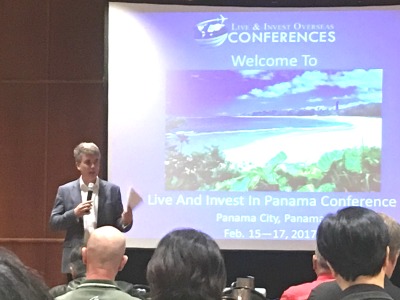
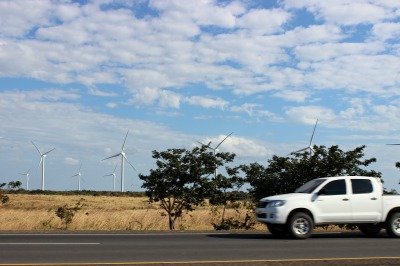
It was a fun trip for us and the kids. We drove to Panama City.
We don’t drive much, but with the improvements to the InterAmericana Highway, it was a pleasure. Especially given that the section between Santiago and David, which used to be horrible, or under construction, it is now a very smooth trip. Although there is still some construction underway.
We enjoyed the chance to spend time together in the car, singing songs and playing 21 questions.
We stopped in Santiago to eat lunch at Subway and have a gelato at the adjacent shop. The little shopping center we stopped at looked remarkably like one in David. Most likely the same company developed it and solicited many of the same stores to locate there. I wonder if we will start seeing clone-like shopping malls in other populous locations on the InterAmericana.
As you can imagine, the conference attendees consisted entirely of 45-70 year-old retirees, or those planning ahead to retirement. The lectures and slide shows took place in one of the Marriot’s several big conference halls.
The conference was at the Marriot Hotel in the banking district of downtown Panama City. It was comfortable and elegant. Something that was especially appealing to our younger daughter Blaise, who really appreciates “fancy”. The hotel was a good choice for the event. It was comfortable and had enough amenities for the 80ish conference attendees, staff, and speaker without feeling cramped. An asset since there were lectures and “meet and greet” opportunities from morning until night for almost 3 full days.
Probably the most outstanding points that I observed were: First of all, Lief Simon is a very comfortable, easy conference facilitator and a very strong public speaker. Although he appeared at all events in a suit and tie, he is not at all stiff, nor artificial when you speak with him. I thoroughly enjoyed his manner and the way that he seamlessly introduced topics and speakers throughout the conference.
Lief is also a very easy guy to chat with in the times between the various events. It was clear that he had a lot of “balls up in the air” during the conference. Yet, he never seemed hurried or stressed, even if there was a momentary hitch in activities. Lief’s style is that of absolute professionalism.
The conference manager was a young French woman named Valentine, who also performed her role flawlessly. We needed to communicate with Valentine on several occasions, and she helped us solve problems, get information, etc…Valentine and her staff were excellent. Lief’s wife Kathleen Pedichord was away in France, I believe. However their daughter Cat was helping to facilitate, and also spoke at the conference. I give five stars to the entire “cast” of the show.

The second fact that I thought most noteworthy was just how serious the attention of the conference attendees was. The atmosphere in the conference room was like a university lecture hall. The students (I mean attendees) had their laptops and notebooks out and there was silence in the room. Except for the voice of the speaker over the PA and the scratching of pens on paper, there was not a sound. I had not anticipated this, but once I got used to it, it only stands to reason.
The attendees of a LIOS Conference, or any other retirement conference represent a section of the overseas retiree population that might be referred to as “the good students”. As opposed to those who just pack an overnight bag, pick a cheap plane fare, and wind up living somewhere for the rest of their lives (or perhaps discovering that they have made a huge mistake).
They were there at the conference ready to listen and to learn. Several people I spoke with had been to other retirement conferences in other countries. A few had been to other LIOS and International Living conferences. The attendees were doing a very thorough job of trying to get as much information as they could about retirement in Panama, before making the big move. This seems like a wise investment in time and money to me.
The conference covered such predictable topics as: Visas, health care, health insurance, home & auto insurance, cost of living, safety and security, shipping your belongings, transporting your pets, banking, and investing. As well as few you wouldn’t think about like Lifecare medical devices, organic agriculture, and trusts. There was a real estate agent and a couple of developers that promoted projects. This included Lief and Kathleen’s beautiful Los Islotes development on the Azuero Pennisula.
Some of the speakers represented their own businesses. There was a man talking about various investment vehicles, including stocks and bonds. There were a couple of guys who had developed cyber security system for email which had some outstanding capabilities. We spoke at length with them during one of the coffee breaks. They were very eager to talk about their product (RPost Communication). Most of this tech talk was over my head. However, Betsy appreciated it.
While there was some promoting during some of the talks, it was to a market that wanted to hear what they had to sell. Those who weren’t interested usually decided not to attend those sessions. Both Betsy and I had been a little wary that the event would have a lot of hype. That is, it would give the good side of Panama without mentioning the bad. At times, there were some issues that were glossed over, but not in a heavy handed way. Overall, we found that the presenters tried to give a realistic picture of Panama.
Betsy and I were among 4 expat speakers who presented. We were the only family with children who spoke. There was a couple from a tiny village of Palo Seco on the western part of the Azuero Peninsula, and a couple from Chitre, a gentleman from Panama City, and Betsy and I from Puerto Armuelles. The task of the expat speakers was to give our views of life in Panama, based upon actually having lived in Panama for a significant number of years.
Our Talk
So, it was our “job” to give a bone fide description of “What it’s actually like to live in Puerto Armuelles, Panama.” Obviously, we didn’t claim to be unbiased in our views. We chose to live in Puerto Armuelles, because we think it’s a great beach town. We also chose Puerto, because we see it as an undervalued investment with a significant potential for growth.
By the time we were finished speaking, everyone knew a little bit about Puerto Armuelles, and about our family’s experience living here for the past ten years. This is good, since before we spoke, most of the folks in the room had never heard of Puerto Armuelles. We tried hard to give a realistic view of our experiences. We talked about everything from moving down, to remodeling, to what we do for fun, and a few things in between. We strived to give an unglossy picture of our life.
Our presentation was on the morning of the first day and lasted for just thirty minutes. However, for the rest of the three day conference, folks came up to speak with us. They wanted to get information and advise from us as Panama experts. When people came up to talk with us during coffee breaks, in the restaurant, or just in the hallway in passing, they seemed very focused on learning more about what information we had to share.
It was fun to elaborate more about what we like, and also what we don’t like, about life in Panama. One comment that we consistently received from attendees was that they felt that our talk was very even-handed in our praise and criticism of life in Panama in general, and Puerto Armuelles, in particular. They said that they felt that they were getting an honest opinion, and not a “glossy, perfect” version of “life in Paradise”. So it seems like we were successful in our goal of giving a realistic picture of life in Panama.
Our final word in the talk was that life in Panama and in Puerto Armuelles is not for everyone. It is important to do your homework. Above all, if you think that just by moving to Panama, you are going to suddenly become a better, happier person, think again. Positive change is an inside job.
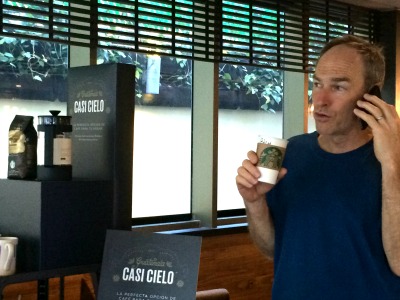
Overall, Betsy and I both thought that the LIOS conference was a great education for the expat attendees. We also learned a few things about life in Panama from the perspectives of other attendees. Also there was a Starbucks kitty-corner from the hotel, so we were able to enjoy sometime drinking coffee and relaxing.
We met some nice folks, mostly from the US and Canada. Some of the attendees were compelled enough by our presentation that they ended up coming to visit us in Puerto Armuelles. One man we met at the conference has decided to rent in Puerto Armuelles, while he gets to know the area.
Find out more about our charming beach town of Puerto Armuelles
Already in love with Puerto Armuelles? Check out our affordable properties for sale.
April 26, 2017
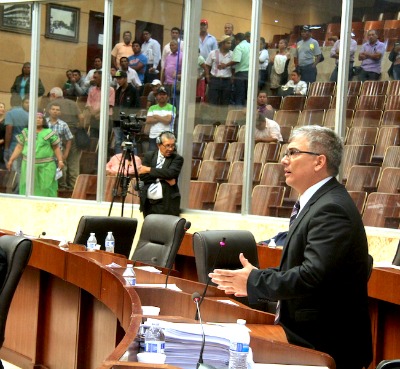
This is excellent news for the economy of Puerto Armuelles and its district of Baru.
It will also be good for many folks in Bocas del Toro.
Which is why all the Chiricanos and Bocatoreños deputies in the Legislature voted yes on it.
Our very own Porteño, deputy Carlos Motta (see photo) of the Democratic Revolutionary Party (PRD), was a major proponent for this bill. I hear he is very happy that jobs and more bananas are coming to Baru.
(Note: Baru is a district in the Chiriqui Province. Puerto Armuelles is the principal town in Baru)

More Jobs
Jobs are why locals were so eager for Del Monte to get the final go ahead by the National Assembly.
More Bananas
The agreement requires that Del Monte put 900 hectares into banana production each year. (Note: the banana fincas are mostly located in the hills above Puerto Armuelles.)
On average, a hectare of land produces 2,725 boxes of bananas a year.
This means alot more bananas. Maybe we will finally be able to find bananas for sale in Puerto Armuelles on a regular basis.
The Details
The Contract between the State and Banapiña details a "Banana Reactivation Project".
It includes:
The contract is for 20 years, and automatically extendable for another 20. However, its tax exemptions must be reviewed by the state after the initial 20 year term.
The 5804 hectares that Del Monte will lease include 4030 State-owned hectares and 1,774 hectares owned by individual owners (including Coosemupar) who will lease them to the State. The State in turn will sublease those 1774 hectares to Del Monte (aka Banapiña). There may be an option for Del Monte to buy those 1774 hectares in the future.
The land must be leased since 90% of the banana plantations are less than 10 kilometers from the border. Foreigners (like Del Monte) are forbidden by the Panamanian constitution to own titled land within 10 kilometers of the border.
Until very recently, there have been continual delays in Del Monte getting permission to grow bananas in Baru.
The Government has made promises & then broken them.
Some progress was made.
But then it was stuck.
The "by early 2017" promised deadline had come and gone.

In March & April 2017, Portaneos took to the streets over the delay.
They organized marches and other peaceful protests to put pressure on the government. They wanted the deal approved by the legislature so that Banapiña Panama, a subsidiary of Del Monte, could finally produce bananas in Puerto Armuelles and other parts of Baru.
The protests seems to have worked.
FYI - they voted yes on Bill 488, the contract between the State & Banapiña Panama to reactivate banana production in Baru
It is now fully approved!
Del Monte (Banapiña) can now start to grow and harvest bananas in Puerto's banana plantations and in other areas of Baru.
The negotiations have involved many factors and obstacles.

Puerto Armuelles was once synonymous with bananas. Starting in 1928, Puerto was built as company town. And it’s company was Chiquita Banana. Unfortunately, racism by the company and worker unrest lead to its workers striking and sabotaging Chiquita Banana’s crops.
Finally, in 2003, Chiquita sold its now unprofitable Puerto Armuelles banana business to a local cooperative, called Coosemupar. Due to a number of factors, Coosemupar was not successful, although it still limps along in a very limited fashion.
Chiquita's departure had a dramatic impact on Puerto Armuelles' prosperity and population. The town went from having close to 50,000 people to alittle more than 20,000 in 2010. The government has not done a census since 2010. But anecdotally, Puerto's population is more than 25,000 these days. Because even without a banana company, Puerto Armuelles's economy has been steadily improving over the last 5 years.
Adding Del Monte to Puerto Armuelles' economy will be a tremendous boost to its prosperity. Both Puerto and Del Monte have been counting on this. Del Monte has been in Puerto for awhile now getting things into place so they would be able to start work once they got the okay from the National Assembly.
It will be exciting to see what happens once the green gold of bananas is seen in the streets of Puerto Armuelles once again.
You can learn more about Puerto Armuelles by starting here.
Interested in living in our charming beach town? Check out our Puerto Armuelles real estate.
To learn more about the backstory of Del Monte coming to town on my site, read about the Minister of the Presidency, Alvaro Aleman, visit to Puerto Armuelles in July 2016. President Varela also touched on the status of Del Monte on his visit to Puerto in September 2016.
[leadplayer_vid id="58FF854299CB2"]
The video above was done by elsalvador.com
Tamborito evolved starting in the 17thcentury after the Spanish conquistadors brought slaves to Panama. The slave dance culture blended with the Mestizo (mix of Spanish and Indian) dances to establish a new dance. One that involved percussion instruments, clapping, singing, and lively choreography.
The dance is a romantic courtship between a man and a woman.
The basic choreography of the dance consists of shuffling steps. Every person who wants to dance creates a circle, men on one side and women on the other. Taking turns, one man and one woman will go into the center and dance with subtle movements of their hips and tiny steps. They may dance next to each other or face to face but never touching. Typically there are at least 6 couples dancing.
The male dancer works to impress the woman with fast footwork and by gesturing with his hat. He dances in a circular pattern- almost as if he is chasing her. The female dancer also moves in a circular pattern in accordance to the man. She holds her pollera (skirt) in both hands, letting the long fabric create a bell shape, as she moves gracefully as if gliding across the floor. At times the empolleradas provocatively swish their long flowing dresses. After inviting him closer in this way, she will spur him by turning her back and continuing her circling dance.
Professional Panamanian folk dancer Dimaris Bergeron says that eye contact is key to any Panamanian folk dance between a man and a woman. The woman is not supposed to smile because that would imply that she finds the man charming. It is a playful dance with the man trying to entice the woman while she resists his appeals.
The men are called montunos named after the straw hat that they wear. The women are called empolleradas named after their long skirt.
At the end of the dance, the partners curtsey to each other.
NOTE: The description of the dance above and the customs below are for the more staged and formal performances. Tamborito often occurs much more spontaneously or casually. Much like the video of Tamborito above.
Tamborito music incorporates Panama's African influences. Tamborito means “little drum”. The rhythm is referred to as “Tambor Norte”.
The Tamborito is played with three small drums, one for the high tones, one for the low tones (and a caja), another one for the rhythm. They layer their sounds on top of each other.
Depending on the region, it may also include a Spanish guitar, a violin and an almirez. The almirez is a metal mortar and pestle that is used as a percussion instrument. The instrument is historically Arabic.
There is usually one female lead singer who is supported by rhythmic chorus clapping and singing of the rest of the women. The lead singer, cantalante, may sing about life, work, or love, depending on the type of tamborito.
An important aspect of the dance is the costuming. Women wear La Polleras. A La Pollera is two separate pieces: a shirt and a Pollerón (long skirt). The gowns are detailed with colorful embroidery, lace, and ribbons.
On top of each female dancer’s head rests a large elaborate headdress called a tembleque.
The head decoration is almost as important as the dress itself. The hair is parted into two braids and tightly pulled back behind the ears. The head is decorated with tembleques. They are designed to sparkle. (see photo below).
The tembleques are applied with various types of combs. There can be as many as twenty combs on the head -ten per side. The woman also wears ornate and reflective jewerly (see photos below).
The men’s costume consists of a
There are different patterns of shirt, pants, and shoes, according to the region.
Click on photos to start slideshow.
The Tamborito is especially popular during the Panamanian Carnival, a national celebration that takes place between February and March, just before Lent begins.
Sources: